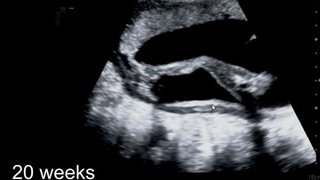Why episiotomy during labor can hurt more than help
October 17, 2017

Before and during childbirth, your doctor or midwife might suggest a number of techniques to encourage stretching of the perineum to allow for a smoother delivery. But one procedure that used to be commonly recommended is rarely used anymore: the episiotomy.
An episiotomy is a surgical incision in the vagina to attempt to create more space for the baby to emerge or to facilitate a quicker delivery. Afterward, the incision is closed with stitches. When I was training to be an Ob/Gyn in the 1980s, episiotomies were part of routine vaginal delivery in the U.S. Today, the procedure is the exception rather than the norm, and with good reason.
At UT Southwestern, we actively educate our doctors about why episiotomies shouldn’t be the standard of care, as well as when the procedure could be necessary. In fact, our episiotomy rate at Clements University Hospital is well below one national goal of 5 percent. We’ll talk about that more below, but first let’s review a history of this procedure and what caused the shift in recommendations.
A brief history of the episiotomy
Episiotomies were first described in the 1700s as being useful for “difficult deliveries” – when a woman couldn’t push out the baby after it was properly positioned in her vagina. The procedure gained traction in the early 1900s when Ob/Gyns made the argument that episiotomies could preserve pelvic floor function by decreasing vaginal muscle damage and could protect the baby’s brain during delivery because the head would have to push against less tissue – both of which we know to be false today. But back then, these arguments were difficult to dispute.
In 1979, nearly 61 percent of women received episiotomies during delivery as a standard of care, especially first-time moms. There typically was no patient-doctor discussion about the procedure because it was routine. During the 2000s, doctors began to use episiotomies less frequently. By 2004, the rate was about 25 percent.
In 2006, the American College of Obstetricians and Gynecologists (ACOG) issued a recommendation against routine episiotomy in all patients. By 2012, fewer than 12 percent of women who delivered vaginally received an episiotomy. Following the advice of its experts, in 2012 a national group evaluating maternity care set a target for the rate of its use below 5 percent. This is a substantial shift in provider mindset in a relatively short time period.
Why the shift in recommendations?
Like many historical shifts in doctor opinion, data drives why we no longer recommend routine episiotomies. The No. 1 reason the procedure has fallen out of favor is that it actually contributes to worse tearing than might occur naturally during childbirth.
As many as 79 percent of women who deliver vaginally will experience some vaginal tearing during childbirth. Now, that might sound scary, but “tearing” is a broad term. Most of the tears that occur naturally are shallow injuries to the vaginal tissue that don’t require stitches. These tears typically heal on their own and cause no further issues. But sometimes more severe tears occur that are deeper in the vaginal tissue or that involve the anus or rectum. This type of tearing requires stitches and can cause additional issues, such as pain or infection.
We know that in spontaneous vaginal delivery, routine episiotomy increases the rate of severe lacerations. Previously, doctors thought that making a little incision would allow for easier stretching of the vaginal tissue. But we now know that an episiotomy incision actually can split further, creating a large tear that might not have happened or might have been much smaller or shallower if the tear had occurred naturally.
Another factor in the switch in opinion is that, in general, more emphasis is placed on patient-centered care today than in previous decades. It’s uncomfortable to think about a procedure in this light, but episiotomy does tend to shorten delivery time. There might have been an element of time-saving on the part of the physicians in routinely performing episiotomies. The faster the baby is born, the sooner they could go home to their own families or move on to the next patient.
How to potentially avoid episiotomy
Today, we provide alternatives to not only reduce the need for episiotomies but also reduce the risk of tearing during delivery. We provide women with access to certified nurse midwives who can work with them to reduce tension in the perineum, the tissue that makes up the outside of the genital area. One such technique to reduce the risk of tearing is applying warm compresses to the perineum before and during labor. This helps the tissue become softer and more pliable.
Watch: 5 exercises and techniques to train for childbirth
Another technique is perineal massage, which helps the tissue relax and become more flexible and resistant to tearing. A study published in 1999 showed that women who hadn’t previously given birth who started perineal massage at 34 weeks of pregnancy had a 10 percent relative reduced risk of tearing requiring sutures than women who didn’t practice perineal massage.
Though we no longer recommend routine episiotomies, keep in mind that certain situations might warrant use of the procedure.
Reasons some women still get episiotomies
If the baby’s heart rate drops during pushing, the doctor might recommend episiotomy to speed up the delivery. Another situation is if the baby needs more space, such as when the shoulders are wider than the head and the baby becomes stuck. This is called shoulder dystocia, and it can become a serious situation. Sometimes the extra space an episiotomy can provide helps the baby come out faster and easier, reducing the potential for birth trauma.
The labor and delivery doctors at UT Southwestern have been through a patient-focused episiotomy education program, which includes presenting every doctor with his or her individual episiotomy rate. The program has resulted in getting our episiotomy rate down from 10 percent to 2.7 percent – nearly half of the recommended goal of 5 percent.
Though childbirth is a natural event, it can cause a lot of trauma to your vaginal tissue. If you had an episiotomy when you delivered and your tearing was minimal, the risk of long-term complications such as incontinence or pelvic floor dysfunction is low. Severe tears, however, can cause issues down the road, so it’s important to talk with your doctor about your history of episiotomy and other surgical procedures.
Women who are searching for the right place to deliver should feel empowered to check your hospital’s or individual provider’s episiotomy rates, as well as resources available to reduce the risk of tearing during delivery. As with any potential procedure, it’s your right to know your provider’s care philosophy and how it fits into your unique needs or birth plan. While we can’t fully predict what will happen in the delivery room, we can get on the same page for what to expect for routine care, and what our game plan might be if a situation arises in which we need to consider alternative solutions such as episiotomy.
Looking for a primary care doctor? Find a UT Southwestern doctor online or call 214-645-8300.










